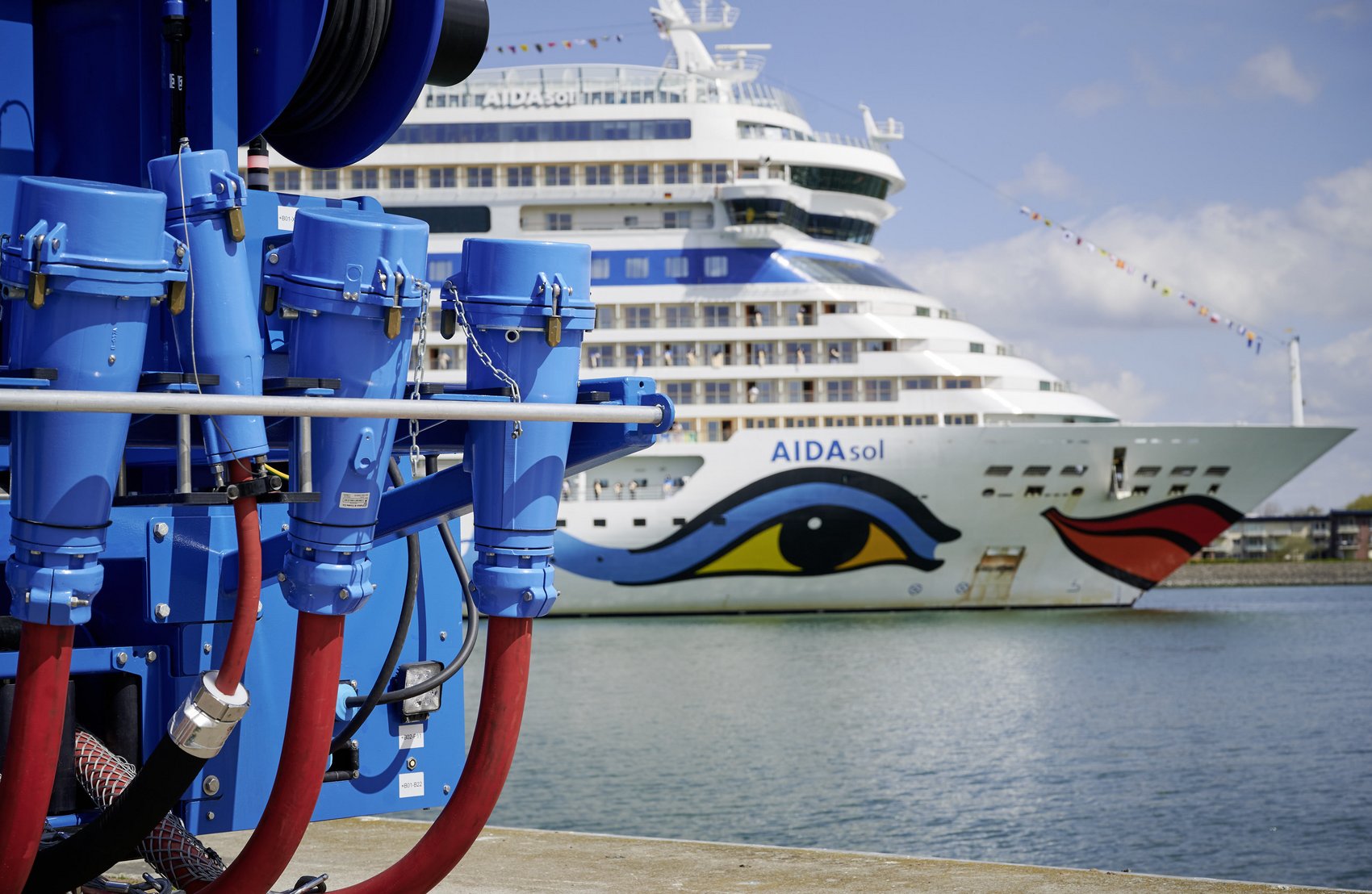Shoreside Electricity Capability
The importance of shoreside electricity
The route towards net-zero carbon cruising has many paths. One of the key areas identified as making a significant impact in terms of emissions is the implementation and use of shoreside electricity/ Onshore Power Supply (OPS) at ports.
This means ships can connect directly to power sources on shore. It allows ship engines to be switched off, reducing emissions by up to 98%, depending on the mix of energy sources, while a ship is in port.
As part of the EU’s Fit for 55 programme to reduce pollution and reach net-zero carbon emissions, all main ports in the European Union will have to install shoreside electricity by 2030 to allow ships to connect and reduce emissions at port. CLIA’s cruise lines are committed to connecting to shoreside electricity when it is available and to working closely with ports to make this possible. We are encouraging ports where cruise ships are scheduled to dock to prioritise the investment in shore power supply facilities at the cruise berths.
Cruise lines are already making substantial investments to equip ships to connect to shoreside electricity. By 2028, more than 210 ships will have shoreside power capability in the CLIA fleet, in addition further ships will be retrofitted with the capability, representing a total of 72% of ships and 74% of global passenger capacity.
Onshore Power Supply (OPS) — deployment and use for cruise operations
- Onshore Power Supply (OPS) is critical to lower local emissions and reduce noise levels at ports to the benefit of the destinations visited by cruise vessels
- OPS is a long-term element in the cruise industry’s decarbonization strategy, which will complement the deployment of low and zero-emission fuel
- There is no stand-alone business case for the deployment of OPS, it shall be considered as part of the infrastructure investments made by countries in their decarbonization strategies. Public funds need to be dedicated to support the deployment of OPS at ports, including at cruise terminals
- Competitive electricity pricing is critical for the phase-out of the use of fossil fuels while at berth. Financial incentives (such as eliminating the tax on electricity, economically viable electricity charging tariffs and avoidance of adopting a front-end loaded cost recovery regime on the infrastructure). Technical requirements should follow internationally agreed standards that are well documented and specified. Ports should adhere to these standards to to ensure worldwide compatibility and safe connection between ports and vessels.
The long-term potential of OPS for the cruise industry
OPS provides several potential benefits, such as lowering emissions, noise levels, and fuel savings. Emissions at berth count for 6% of overall shipping emissions, but for the cruise industry, where time at port tends to be longer, this can represent between 10% to 20% of the itinerary.
In this context, OPS is an important ingredient of the decarbonization roadmap for the cruise industry, which can be deployed in the short to medium term. This is also an essential investment to secure future access to cruise destinations, eliminating concerns from the local population regarding air emissions from cruise vessels and supporting the development of a more sustainable approach to cruise tourism.
The industry started to invest already several years ago. In 2022, 40% of the cruise fleet capacity can connect to OPS, with 98% of the new-build capacity being committed to being fitted with this technology in OPS over 20 years ago. By 2028, CLIA anticipates that around 75% of the cruise fleet capacity will have this capability.
Investment at ports has, however only slowly started, with 26 cruise berths equipped today in the world and only 11 in Europe.
Governments worldwide have recognized this challenge, with Europe mandating the installations at dedicated
ports, whilst other countries drive this investment through local initiatives.
OPS has a clear long-term potential, which will not be overrun in the near term by the emergence of new zero-emission technologies deployed onboard of cruise vessel. The use of zero-emission fuels would indeed help addressing some of the new challenges related to the deployment of OPS such as a need for more storage (lower energy density). The use of OPS will reduce the need for bunkering these new fuels, because of for example the need for additional fuel storage capacity for the equivalent energy need, allowing to save storage onboard, with electricity being a proven highly efficient energy source.
Port infrastructure investment
Port infrastructure had been identified by CLIA as an important area where public finance investment is essential.
The deployment of OPS infrastructure at ports is a multi-million euro investment project. OPS is a core element of the countries’ decarbonization strategy, but also of local public policies to improve air quality and reduce noise levels for the wider benefit of the mobility infrastructure.
While ports across Europe are starting to drive forward projects to implement shoreside power capability, this is complex expensive to do and involves many players. It is another area where collaboration between ports, operators, and public authorities is vital. There are still only relatively few cruise berths in European ports which provide SSE, and public finance is essential in order to meet EU goals.
CLIA members are committed to working with ports and local authorities to support these projects.
So far, however, more cruise ships are equipped with shore power connections than there are ports internationally that offer this option.
To go further:
For additional information on specific requirements for cruise operation and the technicalities of these installations , you may the comprehensive guide on OPS developed by the European Maritime Safety Agency (EMSA).
If you want to know more on the development and deployment of shoreside power, please contact us at Info Europe: [email protected]
Shoreside electricity facility at Rostock Port, Germany

